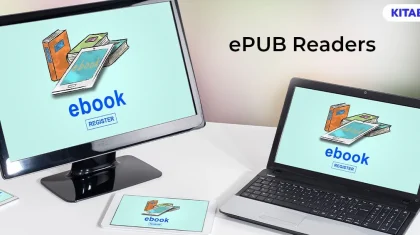
How to Create and Deliver Cost Effective Remote Training
You must have at some point sat through a conference or a video call where you struggled with getting the screen connected, the audio wasn’t clear, and frequent interruptions from you or the other end, like “your voice is breaking off,” or “the screen went black, we can’t see you.”
Typically, around 10-15 minutes are then lost in fixing the issue, with wires being pulled and pushed to check if they are properly connected, opening and closing tabs, reconnecting the session, etc.
Now imagine if this continues throughout a training session. Needless to say, it’s going to be quite ineffective and a waste of time. These audio/video and connectivity issues are a part of online conferencing. With these problems, how do you expect to efficiently manage the Creation and Delivery of a remote training program?
In today’s global marketplace, employees are scattered across cities, countries, and even continents. The Global Workplace Analytics report states that the number of remote workers has increased by 140% since 2005.
Considering this, remote training is the most cost-effective solution for training your global workforce. Organizations are branching out but still manage to stay in constant touch with their employees, ensuring that effective communication takes place among all team members.
This ease of operation without requiring the employee to be physically present at the workplace gave momentum to the remote training model.
Table of Contents:
II. How to Create Remote Training Modules
- Invest in the Right Tools
- Gauge Their Strengths and Weaknesses
- Break the Training into Small Chunks
- Ask Thought Provoking Questions
- Include Problem-Solving Activities
III. How to Deliver Remote Training
- Webinars- Pre-recorded or Live
- eLearning Presentations
- Simulations
- Videos
- eLearning Modules
- Screen Capture
IV. Things to Remember While Delivering Training to Your Remote Team
- Proper Time Scheduling
- Always Ask for Feedback
- Have a Discussion Forum Ready
- Include a Q&A Session
- Offer On-Demand Training
- Promote Social Learning
- Track Training Results
V. Conclusion
What is Remote Training?
Remote training is the process of delivering training to a dispersed workforce at diverse locations. This could be achieved through a video conference, webinar, live chat, podcast, eLearning courses, etc. The intent is to ensure that all employees are on the same page in terms of knowledge and skills.
How to Create Remote Training Modules
1. Invest in the Right Tools
Implementing cost-effective remote training involves investing in tools that provide both quality and value. Thankfully, there are a range of options available to streamline program creation, management, and distribution.
Consider these key tools:
- Learning Management System (LMS)
An LMS helps organize, customize, and deliver training content effectively. It’s versatile and applicable for various types of training, from onboarding to skills development.
Benefits include improved employee satisfaction, retention, knowledge retention, reduced costs, and better training ROI.
- Video Conferencing & Scheduling Software
Tools like Google Meet and Google Calendar facilitate live sessions, Q&As, and event scheduling, enhancing communication and engagement within the remote team.
- Accounting Software
Cloud-based accounting apps like Wave enable seamless collaboration for financial tasks related to the training program, including managing invoices, payments, and expenses.
- Cloud Storage
Reliable cloud storage providers offer easy sharing of training materials such as documents, videos, and presentations among remote employees, ensuring accessibility and collaboration.
2. Gauge Their Strengths and Weaknesses
Before you proceed to design a training module, you first need to analyze the learning requirements of your employees. To do this, you can talk with their reporting managers, as they’ll be able to give a fair idea of the team’s performance and skills.
But also send out a general survey asking employees to rate themselves on each skill that you wish to cover. Based on the feedback, you can gauge how deep you need to delve into the topic. Here are 5 Ways to Create Effective Interactive Training Content.
3. Break the Training into Small Chunks
In remote training, employees are disconnected from the trainer due to the physical distance. If the trainer is unable to view the learners, it becomes difficult to judge the employees’ response to the training being imparted.
To make the training session interactive and engaging, it is best to break the topics into short, concentrated modules and focus on each element rather than overwhelming them with information.
4. Ask Thought Provoking Questions
Once again, to evoke interest and generate engagement, you must ask questions frequently and also encourage the learners to ask questions. Keep the session open to discussions. If you are designing an online learning module, you can add interactive elements like quizzes, polls, drag and drop, videos, etc., to make it more engaging.
5. Include Problem-Solving Activities
The purpose of every training program is for employees to learn new skills and concepts and apply them in real-world situations. Whether you are delivering training on a mobile-based platform or via webinar or live call, ensure that you give them tasks to perform.
In a mobile learning module, you can include simulations and scenario-based training modules, which we will cover later in this blog. During live calls, you can give instant tasks with a time limit and ask the employees to work on them.
How to Deliver Remote Training
Based on the time zone of the employees’ geographical location and their job roles, you can select a delivery method that will ensure maximum impact. Most of these training delivery methods are designed for employees to peruse on the go, as this will enable them to carry on with their daily job responsibilities and simultaneously upskill themselves.
Remote Training Modules Can Be Delivered in the Following Formats:
To deliver cost-effective remote training, you can choose from a variety of formats that ensure affordability and accessibility.
In addition to cost savings, online training methods offer significant time efficiencies. Studies indicate that online corporate training requires 40% to 60% less time compared to in-person classroom sessions. This efficiency not only enhances productivity but also enables employees to manage their time more effectively.
1. Webinars- Pre-recorded or Live
It is entirely your decision whether you want to deliver a webinar session live or send a pre-recorded version. Based on the availability of the remote team, you can arrange for a webinar at a time that is convenient for all the team members.
2. eLearning Presentations
Presentations are no longer a boring collection of slides. With new tools available, especially to create presentations, you can create an interesting training module for your remote employees. With animations and special effects, you can liven up your training deck.
3. Simulations
Simulation is a virtual representation of a real-life scenario. Mainly used in defense and healthcare training, this model has made its way to corporate training rooms. Simulations can be created on online training platforms, where employees are given a scenario with multiple choices.
Based on the choices made by the employee, the simulated exercise proceeds. The best part about simulated training is that even if the employees make a wrong choice that would lead to some disastrous outcome, they get to re-do the sequence. This helps them learn from their mistakes.
4. Videos
Many organizations are opting for video-based training. This is because a video not only conveys the message effectively but also engages the user with powerful audio, background music, rich graphics, and motion.
Creating one for training your remote workforce will enable them to go through the content whenever they want. And since videos are visually appealing and easy to remember, users won’t mind going through them multiple times. Here’s How to Create Engaging Corporate Training Videos
5. eLearning Modules
Online learning, or eLearning, is the most popular form of employee training, where course modules are created and made available on computers. Today, there is mobile-first content creation software that helps you create mobile-friendly content for your tech-savvy employees. This helps them access the courses anywhere and anytime.
Moreover, these software tools can add enrichments like multimedia and quizzes to make the content engaging for the employees. You can use a tool like KITABOO Insight, which can be integrated with an existing LMS to deliver training on every digital device- smartphones, tablets, and PCs. Remote employees only need to download an app to experience rich and compelling learning content.
Case Study: KITABOO Insight Enables Sales Training for Over A Million Users Across 55+ Countries
6. Screen Capture
Screen capture is used when explaining new software. If you have implemented a new tool or software and need to train your remote employees on how to use it, it is better to use screen capture software.
A screen capture tool records the trainer’s screen and the narrative in the background. Thus, employees view a video in which they can see the trainer’s screen, understand each step, and hear the narrator’s explanation.
Things to Remember While Delivering Training to Your Remote Team:
1. Proper Time Scheduling
Scheduling company-wide remote training programs can be tricky with a dispersed team. Opt for a self-paced approach, allowing employees to complete training at their own pace. Provide a guide detailing module durations and recommended time allocations.
For live sessions, choose times suitable for most employees or host sessions tailored to different time zones.
2. Always Ask for Feedback
Whether you deliver training via conference call or mobile devices, always ask for feedback at the end of the training session. This is important so that you can improve based on the suggestions offered by the employees. This will help you conduct a better session next time or make changes to your online training module for better engagement.
3. Have a Discussion Forum Ready
Since many of your remote workers might not be interacting face-to-face on a regular basis, it is important to give them a platform to share ideas and raise doubts. An online discussion forum will help everyone connect and answer each other’s queries quickly.
3. Include a Q&A Session
Once again, irrespective of whether you are conducting training via call webinar or mobile, ensure that you set some time aside for questions and answers. Many a time, when you ask employees to come up with questions on a conference call or a video call, you might hear crickets.
So, the trainer must be ready with questions to ask during the training session. This helps in two-way communication. In eLearning modules, however, it is easy to incorporate quizzes and polls, with options like drag-and-drop, MCQ, labeling, and many other formats.
4. Offer On-Demand Training
Providing training on demand is crucial, especially for employees working remotely. Remember, respecting employees’ time was mentioned earlier? Since remote workers might have different schedules, it’s vital to offer training they can access whenever it suits them.
For instance, if you host a live training session, ensure the recording is available for later viewing. Quick informational videos can also be shared through mobile apps or video platforms for easy access.
5. Promote Social Learning
Social learning is crucial for remote workers. Even though they’re physically distant, it helps them collaborate, share expertise, and stay connected with their colleagues. This type of learning is essential for remote teams as it promotes ongoing development, job satisfaction, and a sense of belonging.
To support social learning, use online tools such as social networks, forums, and virtual communities. These platforms allow remote workers to engage in real-time discussions and learning with their peers.
6. Track Training Results
Measuring the effectiveness of training is another important practice when it comes to training remote workers. It allows employers and training managers to evaluate the success of their programs and identify specific areas that need improvement.
An LMS can provide numerous advantages in this domain:
- Testing and assessment: An LMS comes with functionalities that make it easier to create and distribute tests and assessments, allowing educators to efficiently monitor their students’ comprehension.
- Progress tracking: An LMS tracks employee engagement, progress rates, and engagement, providing important insights into the efficiency of a training initiative.
- Evaluations and feedback: It provides an avenue for staff members and instructors to express their thoughts regarding the training program.
- Reporting and analysis: Reports and statistics are generated to track the collective performance of individuals and organizations.
Conclusion:
Setting up a cost-effective remote training program is crucial not only for sharing knowledge but also for staying competitive in the global market. It offers a robust solution, allowing organizations to equip their dispersed workforce with the necessary skills. By utilizing various tools and delivery methods, companies can overcome distance and time zone challenges to deliver impactful training experiences.
As organizations embrace remote work and global collaboration, investing in robust remote training programs for Creation and Delivery becomes imperative for staying competitive and ensuring continuous growth. Consider leveraging tools like KITABOO to streamline your remote training efforts and empower your workforce for success. Learn more by connecting with us today!
Discover how a mobile-first training platform can help your organization.
KITABOO is a cloud-based platform to create, deliver & track mobile-first interactive training content.



